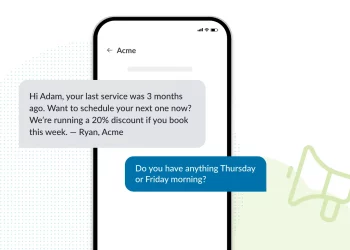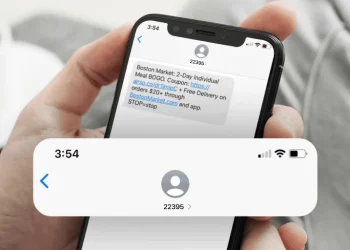You’re probably here because you wish to use text messaging to communicate with your audience. Text messages are the best way to guarantee that they are read due to their high open rate. Before you begin, you must know how to adhere to SMS marketing rules.
The good news is that compliance doesn’t require much effort! However, it is required. We don’t want to terrify you, but breaking the law might have repercussions.
This article will summarize the key elements of SMS compliance before delving into specifics like opt-in procedures, promotion needs, legal requirements, and more. By conclusion, you’ll feel secure enough to send SMS through a text messaging website without being concerned about breaching any restrictions.
Show Written Consent
By law, customers must provide firms with “express written consent” before sending automated promotional text messages, per the Telephone Consumer Protection Act (TCPA). This written permission cannot be concealed within a lengthy, legalese-filled document. It must be obvious to ensure the recipient understands what they agree to. One of the many TCPA violations is failing to follow this directive.
Even informational text messages need to have permission. We’ll discuss how customers can agree to receive text messages from you in our section on opt-in options. But in essence, there are a few ways for them to provide their permission to receive your messages, including:
- Send a keyword to your phone number based on an advertisement with the necessary terms.
- Specify a phone number in the required fields of a web form.
- At a physical location, fill out a form with the necessary terms to sign up in person.
It’s crucial to remember that you must wait to make someone sign up for your text program before they buy anything, including goods or services.
Contacts Importing Rules
Not only for new contacts but for all contacts. Yes, including those you import. Only you know whether the contact list complies with regulations, even though we may review requests to ensure your messages can be sent. Make sure that every person who has permitted you to send messages before you import a list.
Call-To-Action Criteria
A call-to-action message asks the individual to opt into your SMS campaign. It should include the following:
Automated Marketing Messages
Make it clear in your CTA that consumers must agree to receive automated marketing messages to comply with federal regulations governing “express written consent.” Additionally, as mentioned above, let them know that they are not required to consent to receive messages to purchase from you.
SMS Campaign Purpose
Inform your contacts about the purpose of signing up. Will they receive reminders, coupons, or a guide? Mention your offers so that they have a clear idea.
Message Frequency
Inform them how many messages they will receive, or they will sign up for an ongoing message campaign. You can add the estimated number of messages the client will receive weekly or monthly.
Message and Data Rates
Even though unlimited texting has grown in popularity, some users might still need to pay a little to receive texts. The wireless carriers require that you prompt your contacts that these fees might apply if they join your program.
Terms and Conditions
Include all the terms and conditions after the CTA, or add a link. This list should include the following:
- Your company or brand identity
- Customer support contact details
- Product description people are signing up for
- Opt-out notifications (e.g., Text back STOP to unsubscribe)
Privacy Policy
List the privacy policy after the CTA, or add a link.
Confirmation Message
No matter how people sign up, your first message should be about carrier compliance to confirm opt-in. It must recall some essential details, such as:
- Your identity
- Message frequency
- Message and data charges
- Ways to opt-out
Things You Cannot Text – SHAFT
The CTIA is a group of mobile carriers that establishes guidelines and best practices for the text advertising sector. One of these laws is called SHAFT, which stands for sex, hatred, alcohol, weapons, and tobacco. One of the worst breaches is including material connected to these themes in your call to action or your messages, which might lead to an immediate ban.
A few situations constitute an exception to this rule. If you run a bar, you could still send messages advertising happy hour specials. You must, however, have a dedicated, confirmed toll-free number and an age gate that prevents anyone under 21 from subscribing to your SMS.
Conclusion
It’s essential to learn about compliance before you start texting.
Express documented consent from your subscribers is crucial.
Your call-to-action must address your campaign objective, frequency, terms and conditions, privacy policy, and details about SMS and data charges.
Your first text to new subscribers must be a confirmation message.














